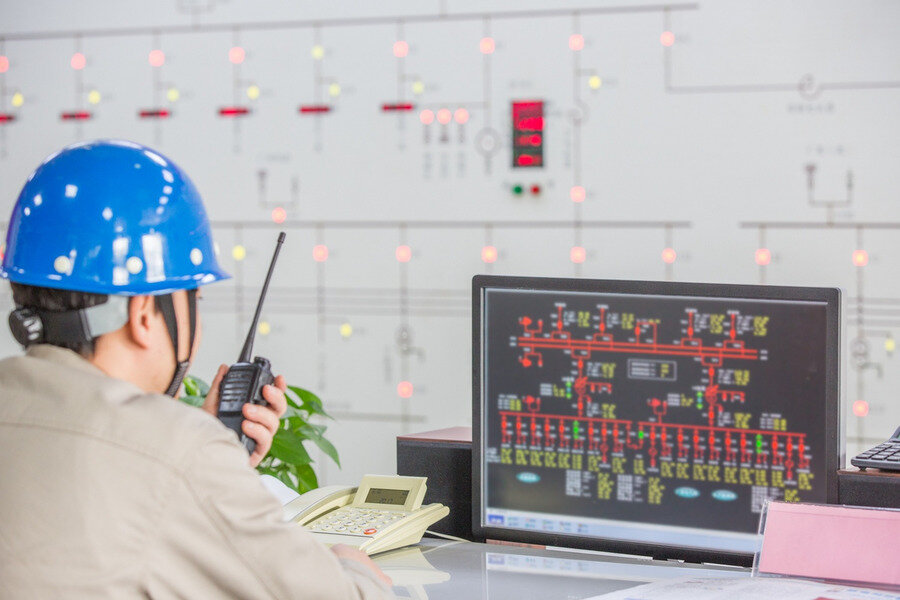An economizer is a device that saves energy. In thermal power plants, it does this by reusing heat that would otherwise be wasted. The word "economizer" comes from the word "economy", which means saving or using resources wisely.
In simple terms, an economizer:
-
Captures leftover heat from the flue gases (the hot gases that come out after burning fuel).
-
Uses this heat to warm up the water that’s going into the boiler.
-
As a result, the boiler has to do less work to heat the water into steam.
This process helps save fuel, reduce costs, and cut down on pollution.
Where Is the Economizer Located?
In a thermal power plant, the economizer is placed after the boiler but before the chimney or stack. It sits in the path of the hot flue gases, which are still full of heat even after leaving the boiler.
So, instead of letting that heat escape into the air, the economizer grabs it and uses it for a useful purpose — preheating the feedwater (the water that will be turned into steam).
How Does an Economizer Work?
Let’s break down the working of an economizer into simple steps:
-
Fuel is burned in the boiler, producing hot gases and heat.
-
The heat boils water to make steam for the turbine.
-
The leftover hot gases leave the boiler.
-
Before these gases go out through the chimney, they pass through the economizer.
-
Inside the economizer are a series of metal tubes filled with cold feedwater.
-
The hot gases pass over these tubes, transferring their heat to the water inside.
-
The water gets warmer before it enters the boiler.
-
Since the water is already warm, the boiler doesn’t have to work as hard to turn it into steam.
This whole process is a great way to save energy and make the power plant more efficient.
Why Are Economizers Important?
Economizers may seem small compared to huge boilers and turbines, but they play a big role in improving the power plant’s performance. Here are some reasons why they are important:
1. Fuel Savings
When the feedwater is already warm, less fuel is needed to heat it into steam. This helps the power plant save a lot of fuel over time.
2. Increased Efficiency
An economizer increases the overall efficiency of the power plant. Efficiency means getting more output (electricity) from the same input (fuel).
3. Lower Operating Costs
Saving fuel means spending less money on fuel. That helps reduce the power plant’s operating costs.
4. Less Pollution
When less fuel is burned, there are fewer emissions (like carbon dioxide, CO₂). This means less pollution and a smaller impact on the environment.
5. Improved Boiler Life
Since the water entering the boiler is already warm, there is less thermal shock (sudden temperature change) in the boiler tubes. This helps extend the life of the boiler.
Types of Economizers
Economizers come in different designs, but they all serve the same purpose: saving heat. Here are the most common types:
1. Non-Condensing Economizers
These are the most common types used in thermal power plants. They use the sensible heat from flue gases (the heat that raises the temperature of the water without changing its state).
2. Condensing Economizers
These also capture the latent heat from the water vapor in the flue gas. This type is more efficient but more complex and expensive.
Materials Used in Economizers
Economizers need to handle high temperatures, pressure, and sometimes corrosive gases. That’s why they are usually made from special metals, such as:
-
Carbon steel
-
Alloy steel
-
Stainless steel
The choice of material depends on the fuel used, the type of flue gas, and the plant’s temperature and pressure levels.
Challenges with Economizers
Even though economizers are very useful, they can have some problems too:
-
Corrosion: If the gases contain sulfur or other chemicals, they can corrode the metal tubes.
-
Soot buildup: Dust and soot from burning fuel can block the tubes.
-
Maintenance: They need regular cleaning and inspections to work well.
That’s why power plants often use soot blowers to keep the economizer clean and in good shape.
Conclusion
In the world of thermal power plants, every bit of energy counts. An economizer may seem like a small piece of equipment, but its impact is big. It saves heat, fuel, and money — all while helping protect the environment.
Understanding how these systems work helps us see the bigger picture of how electricity is made and why smart engineering matters.
So, the next time you turn on a light, remember the hidden heroes like the economizer working behind the scenes to make it all possible, efficiently and wisely.

